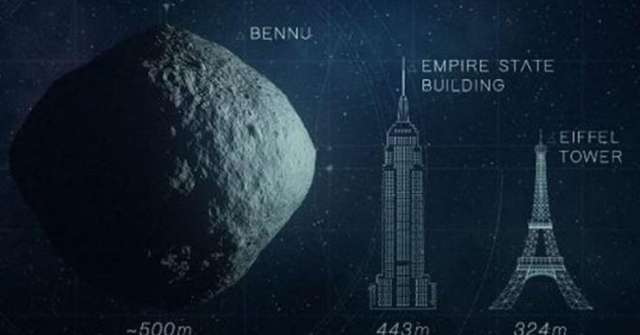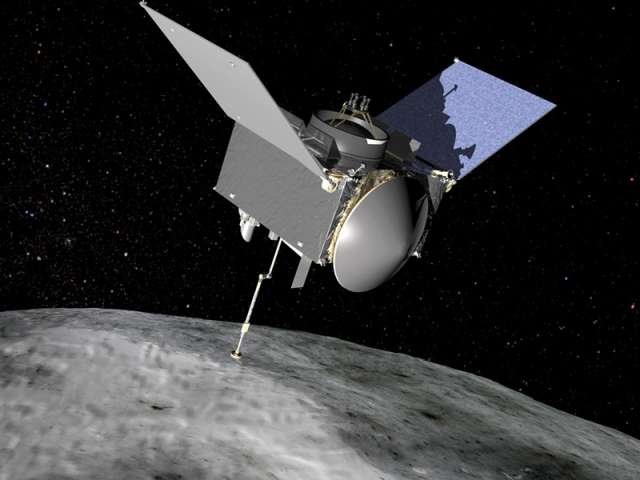
OSIRIS-REx (Origins, Spectral Interpretation, Resource Identification, Security, Regolith Explorer) is a NASA asteroid-study and sample-return spacecraft, launched from Cape Canaveral in SEP 2016 on top of an Atlas V rocket. Some specs:
* Dimensions: Length 2.4 m (7 ft 10 in), width 2.4 m (7 ft 10 in), height 3.15 m (10.3 ft) * Width with solar arrays deployed: 6.17 m (20.2 ft) * Power: Two solar arrays generate 1226 to 3000 watts, depending on the spacecraft's distance from the Sun. Energy is stored in Li-ion batteries. * Propulsion system: Based on a hydrazine monopropellant system developed for the Mars Reconnaissance Orbiter, carrying 1,230 kg (2,710 lb) of propellant and helium. * The sample-return capsule will reenter the Earth's atmosphere for a parachute assisted landing. The capsule with encased samples will be retrieved from Earth's surface and studied, as was done with the Stardust mission.

And here is the iconic moment of OSIRIS sampling Bennu's surface. What's utterly amazing is the distance from Earth at which this happened, some 320 million kilometers. Or, as the distance from Earth to Sun is about 150 million kilometers, or 1 Astronomical Unit, this tiny human-made spacecraft did what it was supposed to do at more than 2 AU! As radio signals to steer the craft would take too long - 15 minutes - to reach it, the entire process was fully automatic.
Also via Twitter:
"Maybe one more time - it's just so cool. I must have watched it about a hundred times last night." - @OSIRISREx principal investigator Dante Lauretta of @UArizonaLPL reveals the first images from the spacecraft's TAG of asteroid Bennu yesterday. #ToBennuAndBack pic.twitter.com/DqTtOA2pwg
— NASA (@NASA) October 21, 2020
In order to get a relevant sample, OSIRIS-REx had to collect at least 60 grams. If the first attempt's yield at the designated "touch and go spot", dubbed 'Nightingale', was less, a second attempt at another spot was scheduled. However, it turned out that was not necessary:
Good news: on Oct. 20, our @OSIRISREx spacecraft captured more than enough material from asteroid Bennu to meet mission requirements! The team is now focused on stowing the sample for return to Earth in 2023: https://t.co/4etvnJzXfn #ToBennuAndBack pic.twitter.com/ILUzEJZHD8
— NASA (@NASA) October 23, 2020
OSISRIS-REx will now return to Earth and its precious cargo is expected to be available for study somewhere in 2023. That's... a thrilling prospect. As Bennu is over 4.5 billion years old, it means that humanity will be able to study material which already existed from before... the creation of our own Solar System!
MFBB.